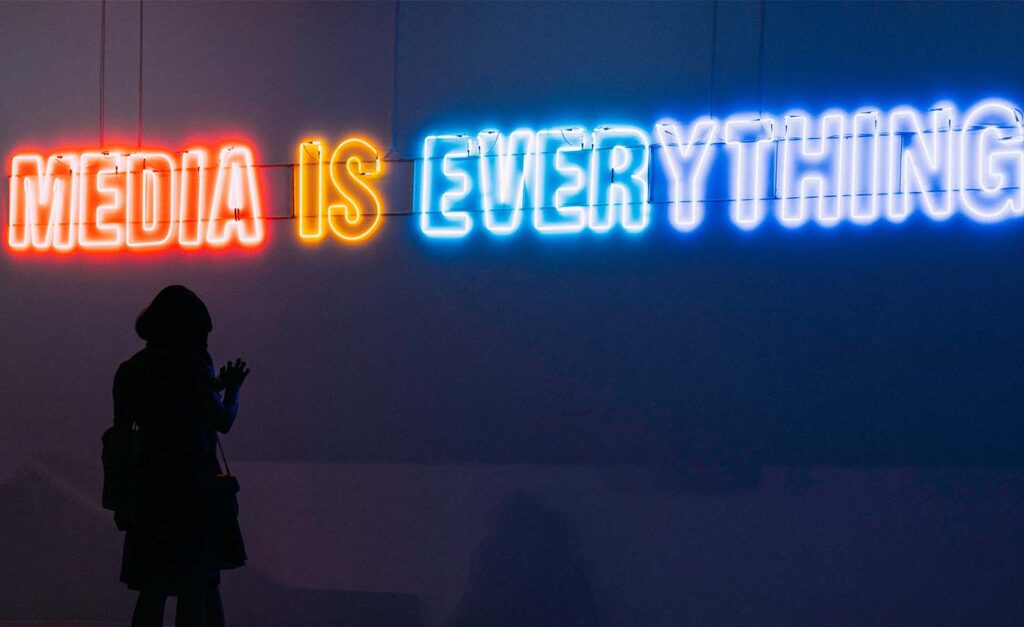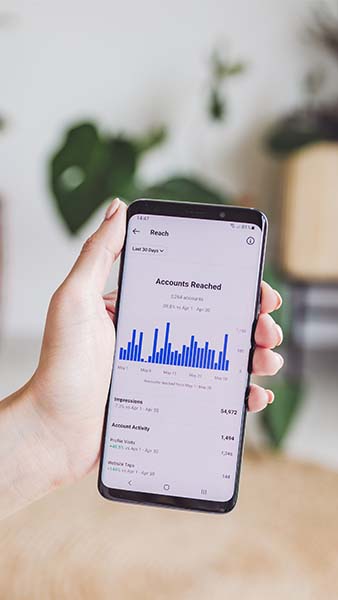
With nearly 5 billion social media users worldwide today, social media platforms play an essential role in your marketing strategy.1
But which platforms are right for your brand?
Answering that question means you have to think about your audience first. Who are they? What’s important to them? How do they use social media? If you don’t know your audience, you’re just yelling into a black hole.
From there, make sure you identify your goals for social media and how they fit your overall strategic marketing plan. Are you focused on increasing awareness? Driving traffic to your website? Generating new leads? Boosting brand engagement? Or monitoring customer conversations?
Once you have a good understanding of your audience and goals, it helps to look at what some of the top social media platforms have in common — and what sets them apart.
It’s all about connections
For social media platforms such as Facebook, WhatsApp, and LinkedIn, it’s all about who’s in your network and who you’re connected to.
Facebook has established itself as a mainstay for small business. It’s how prospects and customers find your location or website. It’s ideal for keeping customers engaged through special offers. And Facebook groups create a sense of community, reinforcing the idea of belonging to something bigger.
As the world’s most popular messaging platform, WhatsApp is a must for businesses that want to connect with global audiences. It allows you to stay in touch with customers and build stronger connections to your brand.
It doesn’t make sense for every brand to be on LinkedIn. But it’s a go-to platform for business recruiting. Here, you’re not marketing to the masses — but looking to make very specific connections.

Marketing in motion
Vertical video (intended for the more mobile-friendly portrait format) is taking over one social media platform at a time. From TikTok and Instagram to YouTube Shorts, it’s consistently trending — especially with younger audiences.
If you want a strong presence on those platforms, you have to play by their rules. And right now, that means embracing vertical video.
User engagement with video tends to be lower than with other forms of content. It’s more about how many eyeballs you reach, or how many views you get, rather than creating a conversation.
These platforms are ideal for influencer marketing. Audiences look to people they trust and follow for recommendations on travel, restaurants, beauty, fashion, health and more. Just make sure you’re selective about who you work with.
Influencer marketing means you’re borrowing the influencer’s audience. And, you’re giving them some amount of creative freedom to market your brand how they want — in order to come across as genuine with their audience.
At your service
Twitter stands alone compared to virtually all other platforms. It’s been slow to follow the lead of other social media when it comes to introducing trendy new features.
One of the things Twitter does best is help create a unique brand voice. Brands such as Dunkin’ Donuts combine humor and a conversational tone to connect with customers on Twitter and become a hub for a community.
If you’re a service-oriented brand, you can also use Twitter to keep in touch with customers and monitor complaints or bad reviews. People use it to share frustration, react to news, or ask for help. It’s why Salesforce calls Twitter the “new 1-800 number for customer service.”2
And, most importantly, you can then use this feedback to make improvements and deliver the support your customers need.
So what’s the right fit for you?
Keep in mind — you and your business can fit in more than one bucket. Your brand can show up in more than one place, and mean different things to different audiences.
So your social media strategy might change, depending on who you’re talking to. For instance, using Facebook to reach Gen X customers and TikTok for Gen Z.
The key is knowing who you’re trying to reach, and which tool is right for the job.

